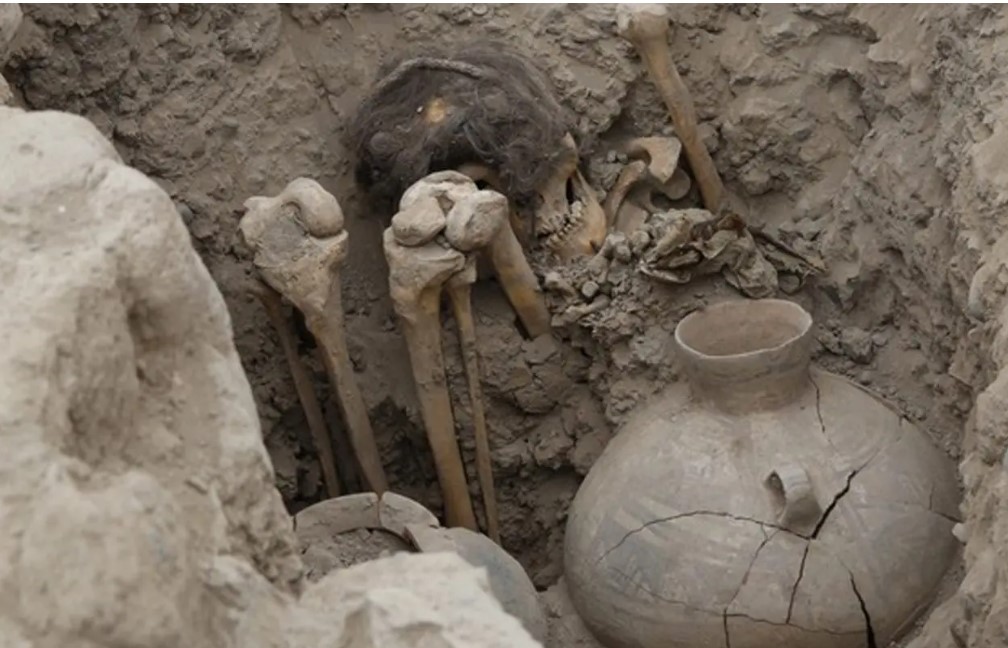TOMB FOUND ON GREAT PYRAMID AT HUACA PUCLLANA
In a recent announcement from the Ministry of Culture of Peru, a remarkable discovery has been made at the Great Pyramid of Huaca Pucllana, situated in the Miraflores District of central Lima, Peru.
Huaca Pucllana stands as an ancient adobe and clay pyramid complex, serving as a pivotal ceremonial and administrative hub for the Lima Culture, a pre-Inca civilization that thrived in the Peruvian Central Coast between AD 200 and AD 700. The pyramid comprises seven tiered platforms, encircled by a central square plaza, with remnants of small clay structures and adobe huts in the vicinity.
Archaeologists engaged in excavations at the apex platform have unveiled a pit-style tomb with a circular layout. This tomb contains the remains of a solitary individual interred in a flexed sitting position, facing south. While preliminary assessments indicate that the individual was an adult, further anthropological analyses are pending to ascertain their gender and cause of death.
The press release reveals that this tomb is attributed to the Ychsma Culture, also recognized as the Ichma Culture. This pre-Inca indigenous society emerged around AD 1100, following the decline of the Wari Empire.

The Ychsma Culture was known for its practice of refurbishing preexisting pyramids from various cultural backgrounds. Notable examples include Huaca Mateo, Huaca San Borja, Huaca Csa Rosada, Huaca Huantinamarca, Huaca San Miguel, and the very site of the recent tomb discovery, Huaca Pucllana.
In the course of excavations within the tomb, archaeologists have unearthed funerary offerings featuring ceramic vessels. Among these, a noteworthy discovery includes a pot adorned with intricate abstract and geometric zoomorphic motifs, alongside a pitcher showcasing a geometric tricolor design set against a red base.
Mirella Ganoza, the individual credited with this tomb’s discovery, remarked, “Prior to 2015, evidence of the Ychsma presence was primarily identified through offerings composed of human hair placed in containers or wrapped in achira leaves, left in various areas across this expansive site, even within its crevices.”
This remarkable find sheds new light on the rich history and cultural intricacies of the Ychsma Culture, adding another layer of understanding to the enduring mysteries of ancient Peru.




